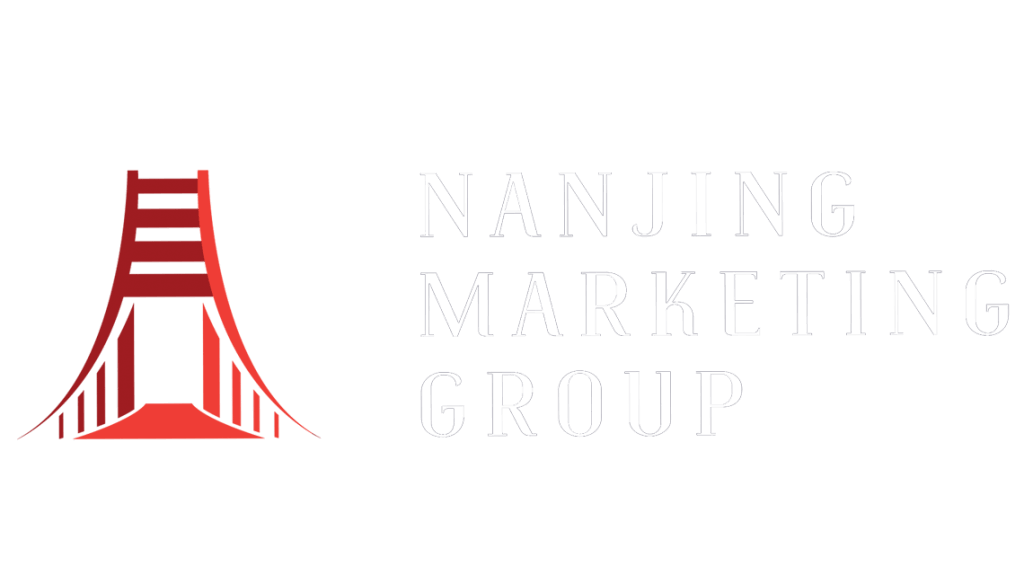Today, we’re going on a tour of China’s super-app—WeChat.
If any of these apply to you, then you’ll definitely have encountered WeChat before, or need it in some capacity:
- Doing marketing or sales in China.
- Traveling around the country
- Living in mainland China.
- Friends in China.
Generally speaking, everyone in China uses WeChat or, I should say, with 1.15 billion active monthly users in total, it’s safe to presume that most people use it. At least every Chinese friend and family member I know under the age of 70 uses it.
When WeChat first started, it was just a simple chat app (comparable, in the beginning, to Kik), but now it’s much, much more.
Needless to say, if you’re doing anything in China, you’re going to come across or need WeChat.
This post began as a YouTube video. Two years, 86,000 views, and 241 comments later, I decided it was time to update the content and write it down.
You can see the original video here.
WeChat Versions
Before we begin, It’s worth mentioning that I’m using the Chinese version of WeChat, but I’ve changed the language settings to English.
This is the same WeChat used in China, but a little different from the WeChat that’s downloaded in other places around the world.
Red packets
Here’s an example of what a regular WeChat conversation looks like.

This one happens to be between my wife and me.
As you can see, it’s just text and images. Unlike other chat apps, WeChat doesn’t let the recipient know whether you’ve received their message or not.
Personally, I think that having no read receipts is a great design choice.
There are a couple of extra features here that are unique to WeChat. For example, one that is popular in China is the “red packet” option.
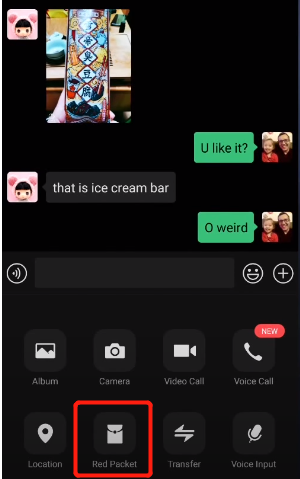
This allows me to send money as a gift.
Because my wife’s birthday is coming up, I’m going to send her eight Chinese yuan (just over one American dollar). 🙂
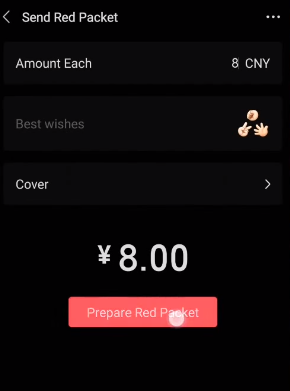
I’m then forwarded to WeChat Pay (I’ll go into more detail about this later), the money is taken out of my digital wallet, and the red packet containing the gifted amount of money will appear in our conversation thread.
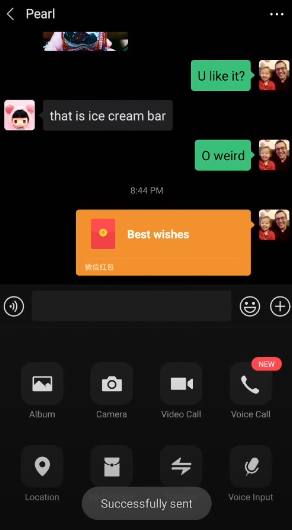
If you didn’t already know, the red packet is an important cultural symbol in Chinese tradition. During Chinese holidays, people will give each other physical red envelopes containing gifts of money.

WeChat lets you know when the other person opens your digital red packet.
Moments
When I enter the “Discover” area, we can find WeChat Moments at the top of the list.

This is an Instagram-like feed where I can see what’s happening in the lives of my friends.
The content is usually related to people’s personal lives, but you’ll also see updates about their business and work, and posts about discounts or sales they’ve discovered.

People can add comments on any of these posts (as long as they are friends with that person).
However, these interactions on Moments are different from what you’ll get on platforms like Twitter, Weibo, and Facebook, where conversations are more public and could go viral.
Comments made on Moments are usually between friends and are much more private in nature.
Scan Me or Scan You?
If I meet somebody new in China and we want to stay connected, then I’ll just open my own QR code under the “Me” section.
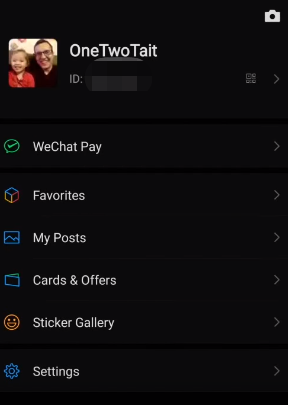

From here, they can scan my QR code, or I can scan theirs, and then we’ll have each other’s contact details.
In business settings in the West, you might be used to getting a business card, email address/phone number, or adding somebody on LinkedIn. However, LinkedIn changed its product in China and now focuses on hiring only, so Chinese users can’t interact with each other on the platform.
People may use business cards, but it’s much more common for somebody to ask for your WeChat.
China loves QR codes, and you’ll see them everywhere you go. I’ll go into more detail later about how to pay using QR codes.
Articles
Here’s a screenshot of my chats.

Now, you might notice not all of my chats are from people. Besides the usual messages from family, friends, colleagues, or clients, I also have messages from brand accounts I follow.
In WeChat, there are two types of brand accounts: Subscription and Service.

Service Account
For example, here’s the Service Account for one of our clients, Grier school.
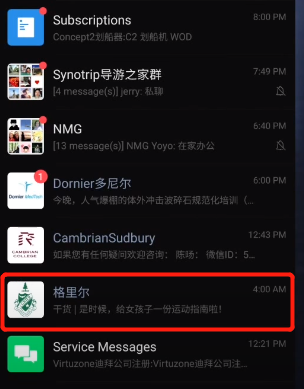
When I click on the account, I’m forwarded to a page containing Grier’s recently posted content.

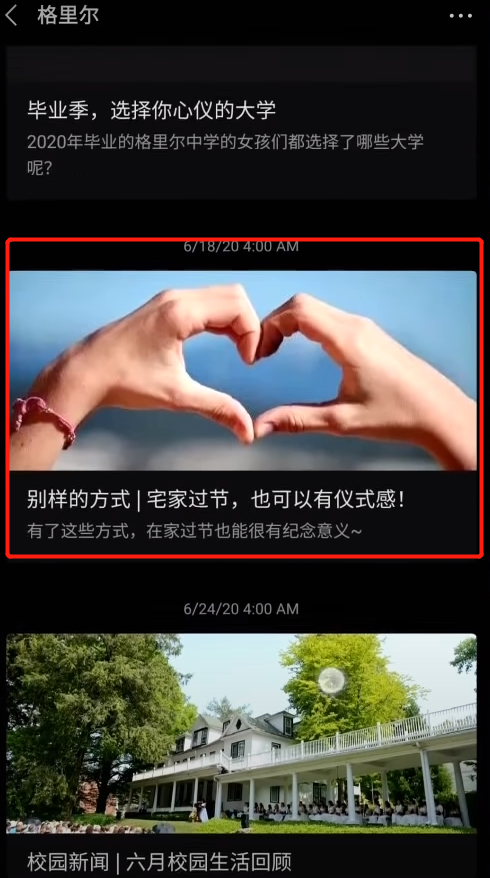
The above article is one of ours. This particular post gives students ideas about what to do during the school holidays during the COVID-19 pandemic.
If I select this, I’ll get the full article (or post).
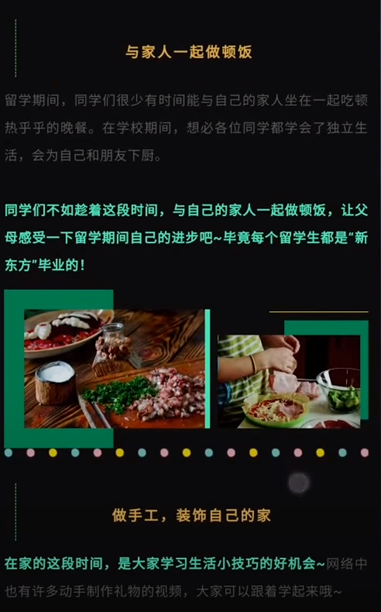
These articles usually contain short blocks of text with lots of images or, sometimes, short videos.
WeChat articles are unique because the account owners decide how the finished product looks. Content creators can really play around with the formatting options available on WeChat, so there’s a lot of room for customization, which makes for attractive-looking posts.
This would be the equivalent of following a newsletter. In general, email is used much less in China compared to elsewhere, so people are more likely to follow their favorite brands on WeChat.
On the main page of their Official Account, there’s a menu at the bottom which gives us access to additional features.

These might connect to
- messages,
- articles, or
- external websites.
I can also click the keyboard icon to start a conversation with the account.

Once I initiate, the brand’s agent can respond to any queries I may have. This back-and-forth conversation expires after 48 hours. After that, the agent can only contact me once more to see if I need anything, or if I want to continue the conversation.
The 48-hour limit gives the customer more control over their conversations with brands. As you might well know, giving out your email address to companies means you have no control over the number of messages you receive and when you receive them.
Subscription Accounts
Now we’re on to the second type of Official Account.
Subscription Accounts don’t show up in the main chat area. Instead, they show up in a separate subscriptions folder.

Within the subscriptions folder, you can see articles from all the different brands I’m following.

The articles look quite similar to the ones in the Service Account.
In general, we use Service Accounts for the brands we’re promoting for two main reasons:
- The account appears in the message area so users can see it.
- Chinese ICP Licenses only allow Western companies (most of our clients) to set up Service Accounts.
However, the advantage of Subscription Accounts is that they can publish more of these articles, and this benefits magazines and publications that want to publish frequently.
If you want to know more about Service and Subscription Accounts check out our blog post here.
Group Chats
Besides individual chats and Service and Subscription Accounts, you’ll also see group chats in my main message area.
For example, you can see a group chat for my marketing agency, NMG. This functions as an internal work chat between colleagues, although a lot of the conversation is non-work related and usually…well, most of the time, just people sharing memes.
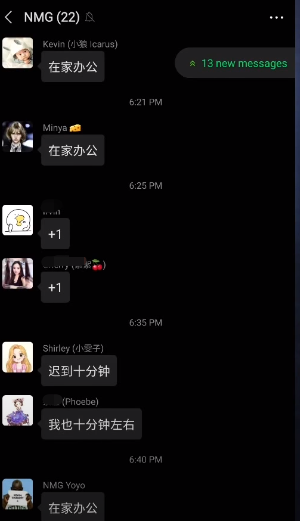
Most of our “serious” (or work-related) talk is done on Slack.
Here’s another screenshot from my hobby business, Synotrip, a marketplace for tour guides.

In this case, instead of being an internal work chat, this is a group of tour guides discussing issues related to their work in China.
There’s a WeChat group for everything. These group chats are usually topic-specific, and you might find yourself in a group with hundreds of (up to 500) people you don’t know.
The group below is a game channel for World of Warcraft.
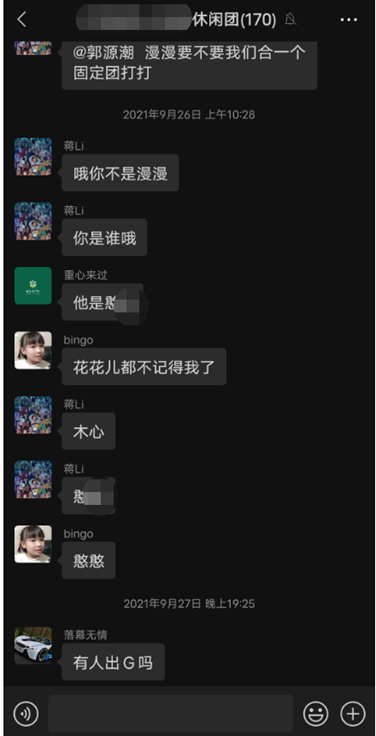
The moderators of these chat groups can’t control the messages, but they can control who gets to join and stay in the group.
Moderators are usually pretty strict.
If members stray too far off-topic or start posting things like promotional content, the moderator may give them a warning, or just kick them out immediately.
On the whole, people in these chat groups tend to be fairly well-behaved.
WeChat Pay
Now, this is very important.

If you’re in China, and you buy anything offline, let’s say you’re at a convenience store, in a restaurant, or buying snacks from a street-food vendor, when it’s time to pay, the person behind the counter or the cart is going to ask you “支付宝? 微信?” (Alipay? WeChat?).
They won’t ask for cash because nobody really uses it nowadays in China. Even if you try to pay with physical money, there’s a good chance they won’t be able to accept it.
Within the WeChat Pay area, I can see the balance on my digital wallet.

I don’t normally keep much money in here (it’s even less now because I’ve just sent my wife eight yuan for her birthday). I also keep bank or credit cards connected to this wallet.
When it’s time to pay for something, I’ll either have to scan the vendor’s QR code or they’ll ask for mine (the QR code is blurred out in the image below).
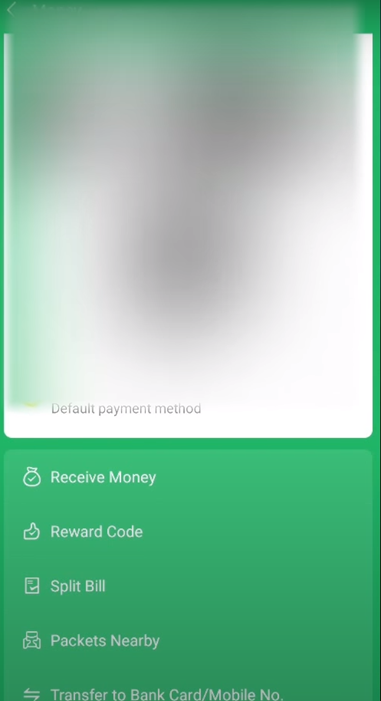
Underneath my QR code, there are some other cool features related to paying. For example, I can split the bill with my friends if we’re eating together in a restaurant.
Mini-Programs
Within the WeChat Pay area, we can see some of WeChat’s major mini-programs, or mini-apps (as they’re sometimes now known).

These mini-programs have a lot of users on their own. To give you a number, approximately 745 million people are using these programs every month.
Let’s take Didi’s “Ride Hailing”, for example, which is very similar to the taxi service Uber.

Now, Didi has a separate app, but—as you can see—I can also access the service through the WeChat mini-program.
When this loads up, I can go ahead and book a car.
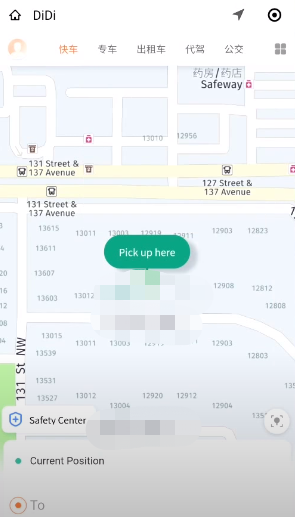
I’m currently in Canada, so I’m not completely sure this would work here, but it would definitely work in mainland China.
Two of the main benefits of a mini-program over a regular app are its quick loading speeds and easy installation.
Loyalty Programs
At restaurants in China. there’s always going to be a QR code that a customer can scan to get some kind of deal.
Here’s my list of recently used mini-programs.
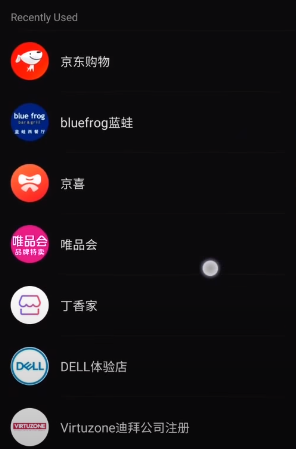
One mini-program I use quite often when I’m in Nanjing is for the restaurant, Blue Frog, (which happens to be my favorite hamburger restaurant in Nanjing, China).
Nanjing has some restaurants with really good burgers, which is something people don’t expect. Just like my favorite dim sum place is in Edmonton, Canada, which again, shouldn’t be the case.
…I’m getting distracted by food again…
Anyway, two of my favorite restaurants are not where you would expect them to be.
Within Blue Frog’s mini-program, I can see all the current promotions and get deals on things like food and drinks.
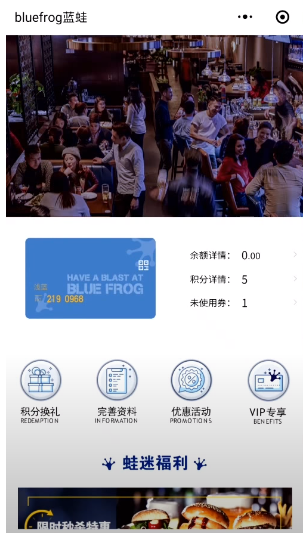
Sometimes these loyalty programs are worth it, but if you don’t visit the restaurant often, then you might not want to sign up.
I end up canceling most of the ones I join and only keep a select few.
A warning to content creators or brands: If you bombard your followers with too much “valueless” (or annoying) content, they’ll probably unfollow you.
Mini-Programs Vs. Apps
To give you a metaphor, the way I like to look at it: If the regular app is a fighter jet, then WeChat is the aircraft carrier.
Let’s take a look at a mini-program I’ve just added.

Jingdong (commonly known as JD) is a major e-commerce platform in China.
The mini-program provides a similar experience to their main app, and it’s very easy to make a purchase here and then pay via WeChat Pay.
You may be thinking: But why would people use a WeChat store instead of using the company’s main app?
To answer this, I asked a number of my friends in China, and one of the common answers was:
“Not everything is actually available on Taobao, TMall, or other Chinese
e-Commerce platforms. You can only access some stores in the form of
WeChat mini-programs.”
I’ve just messaged my friend Shirley to ask about a specific store she only uses through WeChat.

Shirley has shared the store’s mini-program in our chat, and after a couple of clicks and permission requests (which I allow), I’m in, and from here, I can follow the usual steps to make purchases.
Here we go.
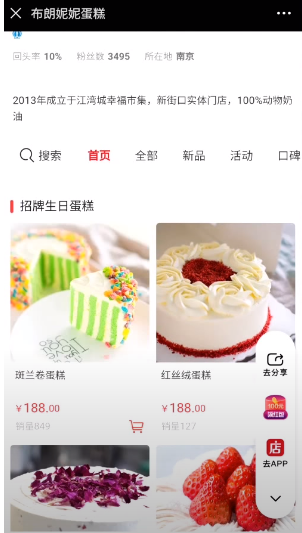
This is a Nanjing-based cake shop, and you can’t find their products on any of the major platforms. However, they have their own WeChat mini-program selling all of their products.
There are different types of mini-program, but they all share similar interfaces (especially at the bottom), which makes it very easy to check out and pay.

As you can see, the whole process was a lot easier than installing a separate app from the Google Play Store.
Channels
Finally, let’s check out one more feature that’s only become a “thing” in the last couple of years.
It’s called “视频号” in Chinese.
In English, it’s known as Channels.
You can scan the QR code below with your phone to see the Channels account I created. The content I share there is mostly in Chinese.

To compete with short-video platforms such as Douyin and Kuaishou, WeChat created its own area for video content.
Channels is a place for content creators and brands to post content and for users to share these videos with friends.
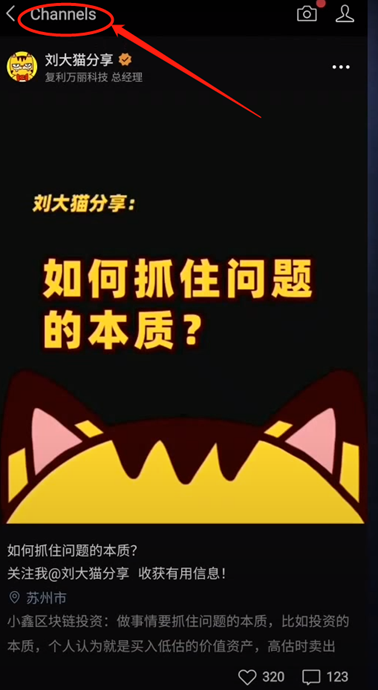
It doesn’t look the same as Douyin or TikTok, but it does have a similar feel to other short-video platforms.
Contact Us
And that concludes today’s tour of WeChat.
I’ve tried to select and discuss what I consider WeChat’s most important features, but there’s a lot more to it than what I’ve discussed in this post. The sheer number of WeChat’s features allows users to dig in deep and do a lot within the app.
If you have any questions or thoughts about anything I’ve mentioned today, please leave a comment below. I’m interested in hearing about your experiences with WeChat and the features you think are most important, useful, or interesting.
Want to know more about marketing on WeChat and other Chinese social media platforms? Check out all our resources on our China digital marketing 101 page.
